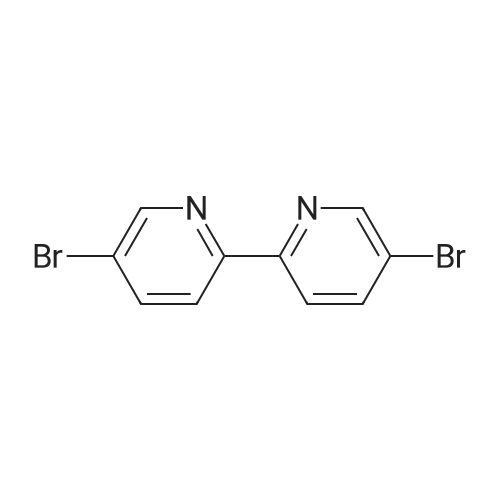Wireless Detection of Trace Ammonia: A Chronic Kidney Disease Biomarker
Shao-Xiong Lennon Luo
;
Timothy M. Swager
;
ACS Nano,2024,18(1):364-372.
DOI:
10.1021/acsnano.3c07325
More
Abstract: Elevated levels of ammonia in breath can be linked to medical complications, such as chronic kidney disease (CKD), that disturb the urea balance in the body. However, early stage CKD is usually asymptomatic, and mass screening is hindered by high instrumentation and operation requirements and accessible and reliable detection methods for CKD biomarkers, such as trace ammonia in breath. Enabling methods would have significance in population screening for early stage CKD patients. We herein report a method to effectively immobilize transition metal selectors in close proximity to a single-walled carbon nanotube (SWCNT) surface using pentiptycene polymers containing metal-chelating backbone structures. The robust and modular nature of the pentiptycene metallopolymer/SWCNT complexes creates a platform that accelerates sensor discovery and optimization. Using these methods, we have identified sensitive, selective, and robust copper-based chemiresistive ammonia sensors that display low parts per billion detection limits. We have added these hybrid materials to the resonant radio frequency circuits of commercial near-field communication (NFC) tags to achieve robust wireless detection of ammonia at physiologically relevant levels. The integrated devices offer a noninvasive and cost-effective approach for early detection and monitoring of CKD.
Keywords:
ammonia sensing ;
chronic kidney disease ;
carbon nanotubes ;
conjugated polymers ;
wireless sensing
Purchased from AmBeed:
100125-12-0 ;
15862-18-7 ;
624-28-2 ;
400859-09-8

Complexing Carbon Nanomaterials and Reactive Metal Species for Selective Chemical Sensing and Tunable Catalysis
Shao-Xiong Lennon Luo
;
Massachusetts Institute of Technology,2023.
More
Abstract: This thesis highlights strategies for fiinctionalizing carbon nanomaterials with reactive metaspecies for applications in chemical sensing and electrocatalysis. In Chapter 1, we begin with anintroduction of chemiresistive sensing using functionalized carbon nanotubes (CNTs). Thisintroduction summarizes the design, fabrication, characterization, and evaluation of carbonnanotube-based chemiresistive sensors. Potential strategies for optimizing sensitivity andselectivity are also discussed. Typical applications of'CNT-based chemiresistive sensing are alsosurveyed. In Chapter 2, we report the synthesis of Pentiptycene Polymer/Single-Walled CarbonNanotube Complexes and their applications in the selective detection of benzene, toluene, and o.xylene using chemiresistive and quartz crystal microbalance-based methods. In Chapter 3. wereport a method to efiectively immobilize transition metal selectors in close proximity to theS WCN'T surface using pentiptycene polymers containing metal-chelating backbone structures. Wehave identified sensitive, selective, and robust copper-based chemiresistive ammonia sensorsdisplaying low parts per billion detection limits. We have added these hybrid materials into theresonant radio firequency circuits of commercial near-field communication (NFC) tags to achievewireless detection ofammonia at physiologically relevant levels, offering a non-invasive and cost.efiective approach for early detection and monitoring of chronic kidney diseases. In Chapter 4we report that iptycene-containing poly(arylene ether)s (PAEs) show to limit the palladiumnanoparticles (Pd NPs) growth and stabilize the Pd NPs dispersion. SWCNT-based chemiresistorsand graphene field-efect transistors (GFETs)using these PAE-supported small Pd NPs aresensitive, selective, and robust sensory materials for hydrogen gas under ambient conditions. InChapter 5, we describe chemiresistors based on SWCNTs containing small and highly reactivecopper-based nanoparticles in sulfonated pentiptycene poly(arylene ether)s (PAEs). The sensorsshow exceptional sensitivity to trace hydrogen sulfide in wet air with a low-ppb detection limithigh selectivity over a wide range of interferants, and month-long stability under ambientconditions. In Chapter 6, we report a SWCNT-based chemiresistor catalyst combination that candetect ppb levels of' ethylene in air, driven by the chemoselectivity ofthe catalytic transformationThe utility of this ethylene sensor is demonstrated in the monitoring of senescence in red carnationsand purple lisianthus flowers.In Chapter 7, we report SWCNT-based chemiresistive sensorsbased on a catalytic system comprising a copper complex and TEMPO cocatalyst, enabling thesensitive, selective, and robust detection of trace ethanol in air. In Chapter 8, we report thesynthesis of carbon-nanomaterial-based metal chelates that enable effective electronic coupling toelectrocatalytic transition metals. The defined ligands on the graphene surfaces enable theformation of structurally precise heterogeneous molecular catalysts. We demonstrate that thedensely functionalized metal-chelated carbon nanomaterials are eliective heterogeneous catalystsin the oxygen evolution reaction with low overpotentials and tunable catalytic activity.
Purchased from AmBeed:
100125-12-0 ;
14221-01-3 ;
15862-18-7 ;
7681-65-4



 Chemistry
Chemistry
 Pharmaceutical Intermediates
Pharmaceutical Intermediates
 Inhibitors/Agonists
Inhibitors/Agonists
 Material Science
Material Science















 For Research Only
For Research Only
 120K+ Compounds
120K+ Compounds
 Competitive Price
Competitive Price
 1-2 Day Shipping
1-2 Day Shipping





